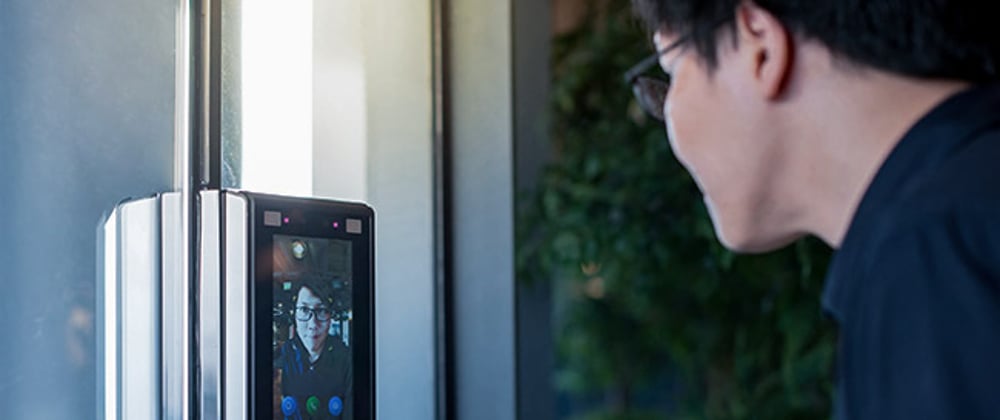Thousands of users and millions of downloads worldwide make OpenCV one of the most popular libraries geared toward machine learning and computer vision applications. No wonder that multinational corporations such as Microsoft, Google, Intel, and IBM have already adopted the library to optimize their products and services. Let’s consider what opportunities businesses can get with OpenCV and what benefits it brings to healthcare solutions.
What is OpenCV?
OpenCV is a C++ computer vision (CV) library, or, rather, a set of libraries launched by Intel in 1998. It is made up of machine learning algorithms and neural networks designed to process images and videos, detect and track objects and people along with their specific features, and carry out many other operations in real-time. The open-source nature of the library enables engineers to utilize, modify and distribute OpenCV-based software for various purposes, including commercial use.
OpenCV is a cross-platform library that runs on all major operating systems, including Windows, Linux, macOS, Android, and iOS. It supports C/C++, Java, and Python and has CUDA, MATLAB, and OpenCL interfaces. Starting from version 3.3, the library has the Deep Neural Network (DNN) module that makes it compatible with different deep learning frameworks, such as TensorFlow, Caffe, and PyTorch. The DNN module allows training models on these frameworks and then porting the models to OpenCV with little effort.
Developers can get the full benefit from the library’s graphics processing unit (GPU) module. GPU-accelerated algorithms facilitate the development of real-time computer vision applications with high processing power and speed.
A vast collection of main and extra modules fuels the extended functionality of the OpenCV library. For example, the image processing module includes tools necessary for working with images, and the video analysis module targets background subtraction, object tracking, and other video analysis operations.
OpenCV Application Areas
Machine learning algorithms and deep neural networks replace humans and enhance process efficiency in many industries. OpenCV definitely has what it takes to complete a broad range of computer vision tasks. Let’s look at some of the library’s applications.
Internet of Things (IoT)
OpenCV algorithms can process and analyze videos from multiple cameras, detect objects and people, track and estimate their motion. These features are widely used in IoT applications, such as smart homes, to monitor events remotely and ensure the safety of people and facilities.
Robotics
Implementing OpenCV algorithms aids robots in positioning, navigation, obstacle avoidance, and manipulation. The library’s tools improve human-robot interaction (HRI), seamlessly coordinating actions between people and robots over very long distances.
Autonomous Transport
Self-driving transport relies on object and people detection, motion tracking, and other CV algorithms. OpenCV functionality allows autonomous vehicles to identify other cars, pedestrians, road signs, and drive safely with minimal human input.
Industrial Automation
OpenCV computer vision systems can automate operational processes at industrial enterprises. They can control manufacturing quality and check the marking of goods and materials with OpenCV OCR (Optical Character Recognition).
Security and Surveillance
Surveillance solutions based on OpenCV computer vision can monitor activities 24/7 and prevent incidents. State-of-the-art security systems employ OpenCV facial and biometric recognition to verify and authenticate identities.
OpenCV in Healthcare
It’s highly unlikely that artificial intelligence (AI) and computer vision technologies will completely replace doctors in the foreseeable future, however, they already facilitate them in many ways. The OpenCV library covers all operations necessary to create reliable healthcare solutions.
Social distancing systems are one of the latest computer vision application trends. OpenCV people detection algorithms can identify people, calculate distances between them, and determine whether the required distance is kept. OpenCV facial recognition serves a similar purpose when used in face mask detection systems—they identify people without masks and minimize the risk of disease transmission.
Computer vision assists with medical diagnosis. For example, implementing OpenCV image segmentation, feature extraction, and feature matching can help detect skin cancer at an early stage. Algorithms and neural networks can be trained on tons of datasets, thus constantly increasing diagnostic accuracy and avoiding false-positive results.
OpenCV object classification and identification can improve medical imaging. By analyzing X-ray, computed tomography (CT), and magnetic resonance imaging (MRI) scans, CV applications identify diseased organs or tissues. By using 3D reconstruction available in calib3d and related OpenCV modules, health professionals can visualize images, converting scans of organs into 3D models.
Robotic systems equipped with advanced computer vision and machine learning algorithms enable surgeons to perform complex operations, including remote surgery with robotic arms. With GPU acceleration and a focus on real-time processing, OpenCV suits such solutions very well.
Aiding medical personnel in patient care is another promising area where computer vision can be effectively applied. OpenCV is a multifunctional platform that can serve as a basis for building remote systems to monitor patients in real-time. These systems collect data from cameras installed in hospital wards and all over the place in healthcare facilities. OpenCV algorithms and neural networks can process images, estimate people’s states and postures, detect and predict events, such as falls. After identifying a dangerous condition, the system will immediately notify medical staff so they provide timely assistance.
AI and computer vision have contributed heavily to healthcare. Apart from the above applications, CV solutions are used in laboratory testing for blood and tissue analysis. They can estimate blood loss during cesarean section, optimize medical reporting, and enhance security in health institutions using facial recognition. Given the variety of tools and features it offers, OpenCV can find extensive applications in the industry. Let’s take a closer look at one of its use case scenarios—a computer vision-based skin cancer detection app.
Implementing OpenCV Computer Vision Algorithms for Identifying Melanoma Skin Cancer
Making an early diagnosis can encourage timely treatment, prevent disease progression, and save a patient’s life. Medical professionals leverage computer vision applications to detect diseases at early stages. Such solutions have become more available, and now even non-professionals can check their health at home using a mobile app. A skin cancer detection system is a fine example of a self-exam.
Almost every person has moles or nevi—pigmented skin growths that can be common, congenital, and dysplastic. The last two mole types have a higher risk of becoming malignant. By downloading a special mobile application, users can check their moles, get a diagnosis, and prevent melanoma skin cancer. These apps require a high level of detection accuracy, which can be achieved by developing robust computer vision algorithms.
The OpenCV library can help developers create image processing and recognition algorithms that process images at high speeds and detect cancerous moles. The algorithms identify various characteristics of a nevus and match them with target parameters. These parameters include:
- Asymmetry (the mole is irregularly shaped)
- Border (the mole’s edges are ragged or blurred)
- Color (the mole has multiple colors or shades)
- Diameter (the mole is 6mm in diameter or larger)
- Evolution (the mole is changing in size, shape, or color)
OpenCV algorithms pre-process images (remove hair, freckles, vignetting), segment a mole, and calculate ABCDE characteristics. Using different image processing methods, including histogram analysis, contour detection, color filters, and image overlay, can increase the accuracy of melanoma detection. OpenCV allows engineers to build algorithms that can improve the extraction of a mole’s border, namely:
- Color balancing
- Unsharp masking function
- Sharpening filter
- Gamma correction
- Automatic brightness and contrast optimization with optional histogram clipping
- White balancing
- Custom k-means clustering with a pre-defined color set
Implementing OpenCV-based computer vision algorithms can reduce image processing time to less than 0.1 seconds and increase melanoma diagnostic accuracy to at least 80%.
Conclusion
OpenCV provides an array of freely available computer vision algorithms and neural networks that can process images, detect objects, people, and features, analyze videos, and complete other tasks in real-time. The library has widespread application in many fields, including robotics, industrial automation, security systems, and IoT.
Healthcare is another area that can leverage the full potential of OpenCV. It can optimize medical imaging, assist with surgical operations, and make a diagnosis faster and with higher accuracy. For example, by using OpenCV image processing and recognition algorithms, advanced solutions can identify melanoma skin cancer at an early stage.
OpenCV has a broader application range and functionality. To learn more about its uses and implementations, you can visit our blog and read a new article on developing OpenCV computer vision algorithms for people detection in IoT home automation.
We at Integra Sources harness artificial intelligence, machine learning, and computer vision technologies to create reliable, innovative solutions that meet industry needs.








Top comments (0)